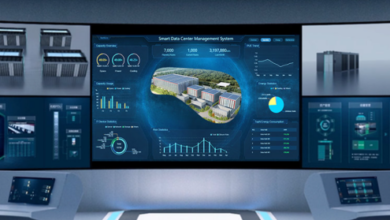Optimal Office Environment: Combining Commercial Window Glare Control Film with Efficient Doors

The modern office is a complex ecosystem. It needs to be functional, aesthetically pleasing, and cater to the well-being of its occupants. Two key aspects that significantly impact this environment are natural light and access control. This article explores how commercial window glare control film and doors can be strategically combined to create an optimal office space that fosters productivity and employee satisfaction.
The Power of Natural Light
Natural light is a critical element in any office. Studies have shown it to enhance employee mood, focus, and overall well-being [1]. It also reduces dependence on artificial lighting, leading to energy savings. However, unmitigated sunlight can create problems. Excessive glare can cause eye strain, headaches, and discomfort for employees working on screens.
Enter Commercial Window Glare Control Film
Commercial window glare control film offers a solution by selectively filtering incoming sunlight. It reduces glare without significantly diminishing natural light transmission. Different film types offer varying levels of glare reduction and light filtering. Here’s how they contribute to an optimal office environment:
- Reduced Glare: By filtering out harsh light rays, glare control film creates a more comfortable workspace. This minimizes eye strain and headaches, allowing employees to focus on their tasks without visual discomfort.
- Improved Aesthetics: Glare can create a washed-out effect that detracts from the office’s visual appeal. Glare control film helps maintain a clear view of the outdoors while mitigating the harshness of direct sunlight, creating a more balanced and aesthetically pleasing environment.
- Enhanced Energy Efficiency: Some glare control films offer heat rejection properties. By reducing the amount of solar heat gain through windows, they can help lower cooling costs during summer months. This contributes to a more sustainable office environment.
- UV Protection: Many glare control films provide UV protection, safeguarding against furniture fading and protecting employees from harmful ultraviolet rays.
Choosing the Right Glare Control Film
The choice of film depends on several factors:
- Sun Exposure: South-facing windows typically receive the brunt of direct sunlight. Higher glare reduction might be necessary compared to north-facing windows.
- Desired Light Transmission: Consider the amount of natural light that’s ideal for the specific work area. Films come with varying light transmittance levels.
- Aesthetics: Choose a film with a finish that complements the office’s overall design. Options range from clear to slightly tinted, with reflective or non-reflective properties.
The Importance of Efficient Doors
While natural light is beneficial, maintaining a sense of privacy and managing noise levels are equally crucial. Doors play a vital role in achieving this balance.
Here’s how efficient doors contribute to an optimal office environment:
- Privacy: Solid core doors with frosted glass panels provide privacy for individual offices or conference rooms while allowing some light to filter through.
- Noise Control: Well-sealed doors with sound-absorbing properties can significantly reduce noise transmission, minimizing distractions and promoting focus, especially in open-plan offices.
- Traffic Flow: Efficient doors, such as sliding or swing doors with self-closing mechanisms, ensure smooth traffic flow while preventing slamming or unnecessary noise.
- Safety: Fire-rated doors provide essential safety measures, ensuring occupants can evacuate safely in case of emergencies.
The Synergy of Glare Control Film and Efficient Doors
Commercial window glare control film and doors work together to create a well-balanced office environment. Here are some key points to consider:
- Light Distribution: Film placement should be strategic. Consider applying it to windows that receive excessive sunlight, allowing natural light to penetrate areas with less sun exposure.
- Door Location: Position doors to minimize glare on computer screens while ensuring clear access for employees.
- Visual Consistency: Choose film and door styles that complement each other, contributing to a cohesive office design aesthetic.
- Accessibility: Ensure doors comply with accessibility regulations for employees with disabilities.
Additional Considerations
- Employee Input: Involve employees in the decision-making process. Understand their preferences regarding natural light levels and privacy needs.
- Professional Installation: Professional installation of window film ensures optimal performance and longevity.
- Maintenance: Regular cleaning and maintenance of both doors and film will ensure their functionality and appearance.
Conclusion
By strategically combining commercial window glare control film and efficient doors, you can create an office environment that prioritizes employee well-being and productivity. Natural light is maximized while glare is minimized, promoting focus and comfort. Efficient doors manage noise control, privacy, and traffic flow, creating a functional workspace. This synergy fosters a positive and productive office environment for everyone.




